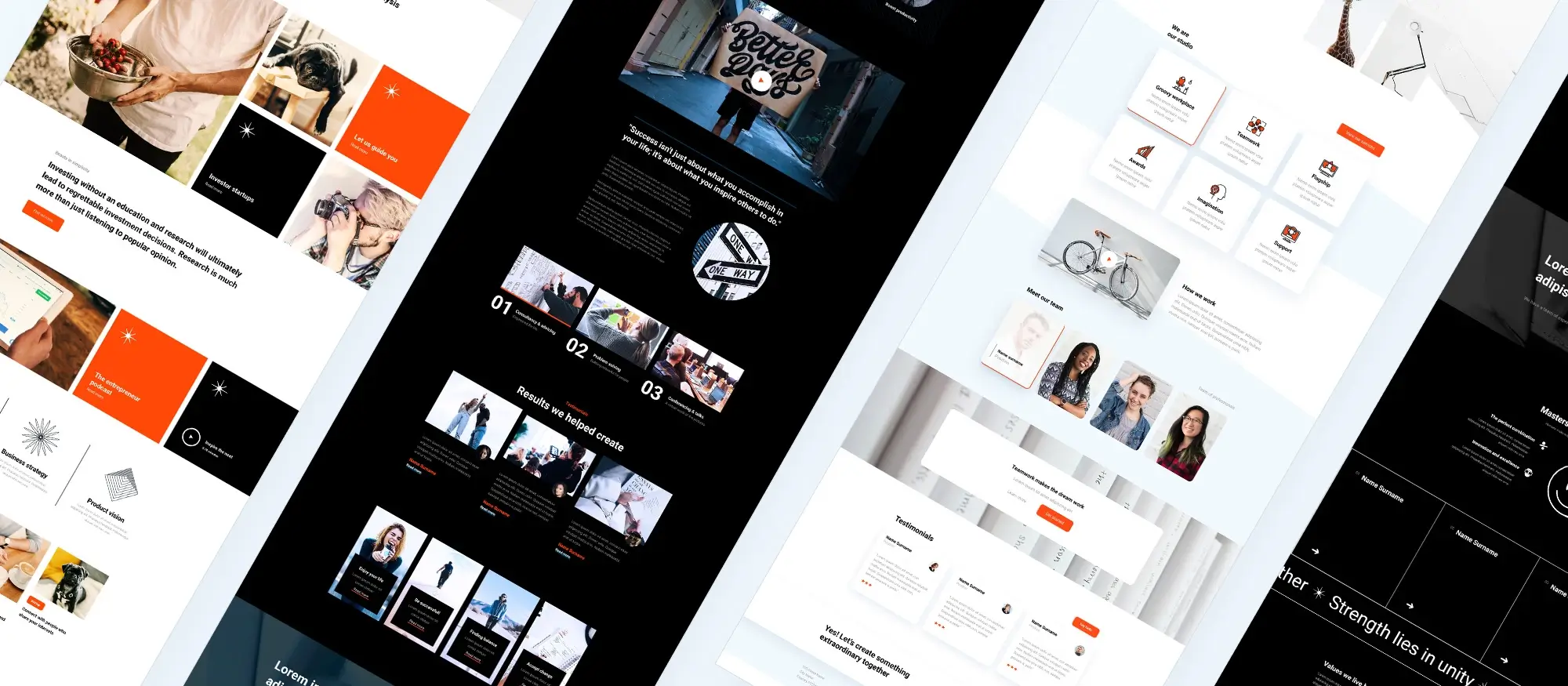What are the best Elementor alternatives for non-profits in 2025?
Try MaxiBlocks for free with 500+ library assets including basic templates. No account required. Free WordPress page builder, theme and updates included.
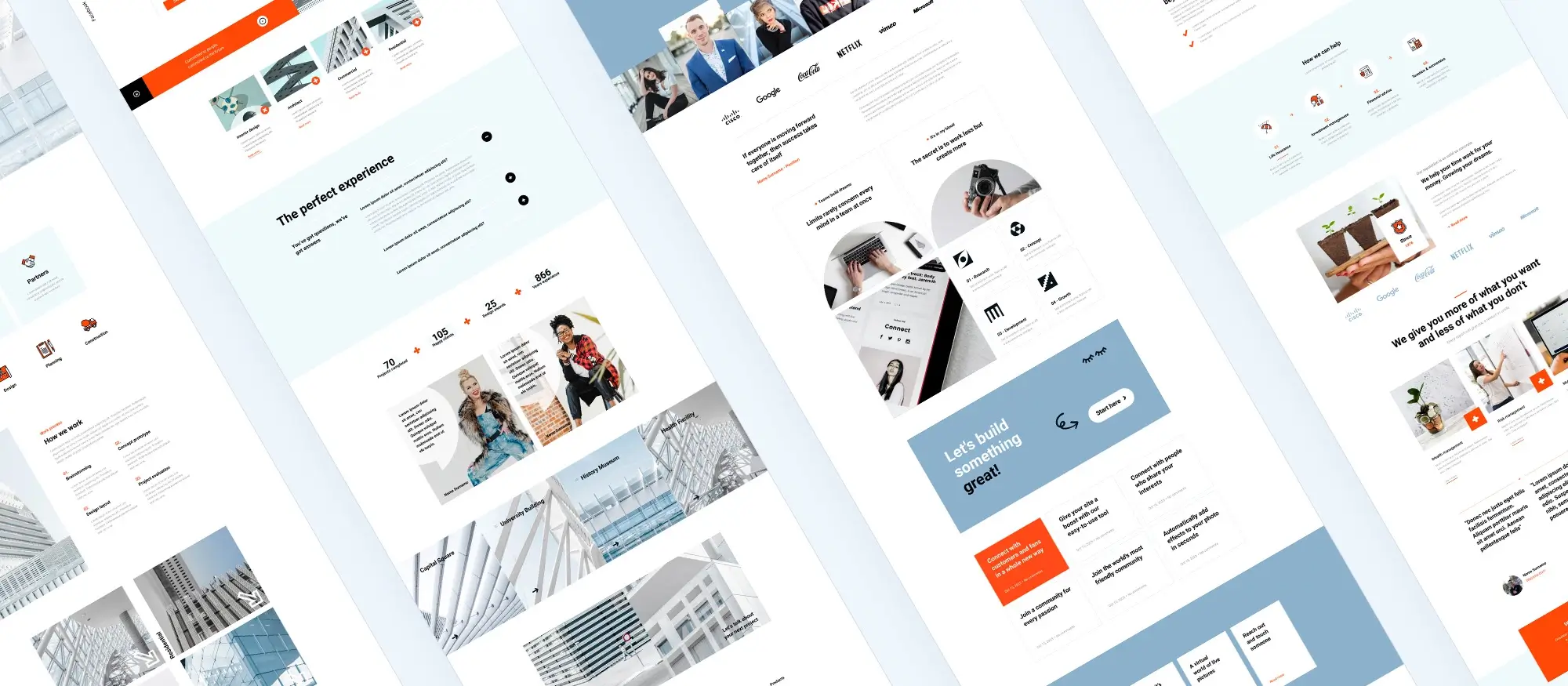
Why look beyond Elementor?
Elementor is a popular WordPress page builder that helps users create professional websites through a drag-and-drop interface. Many organisations use it because it simplifies website design without requiring coding knowledge.
However, non-profits often face challenges with Elementor, including:
- High costs: The pro version can be expensive for organisations with tight budgets.
- Complexity: New users can find it overwhelming, with a steep learning curve.
- Plugin overload: Adding features often means installing multiple plugins, slowing the site down.
For non-profits, having an easy-to-use, affordable solution is essential. The right page builder should make it straightforward to manage and update content without technical headaches or inflated costs.
What non-profits need in a page builder
1. Affordability or a free tier
Budget constraints make a cost-effective or free solution necessary. Non-profits need full-featured options without hidden fees.
2. Easy for non-technical teams
Most non-profits don’t have dedicated IT teams. A straightforward, intuitive interface reduces reliance on external help and empowers internal staff and volunteers.
3. Integration with donation tools
Seamless integration with fundraising platforms like GiveWP or Donorbox ensures smooth donation experiences and straightforward management.
4. Good performance and SEO
Fast-loading pages are critical. The page builder must offer clean, efficient code to keep sites quick, improving user experience and search engine visibility.
5. Accessibility compliance
Public organisations often need websites to be accessible to all users, including those with disabilities. Ensuring compliance with accessibility standards is both ethical and practical.
6. Community support and free resources
A supportive user community, comprehensive documentation, and free tutorials help non-profit teams quickly solve problems and make the most of their websites without extra costs.
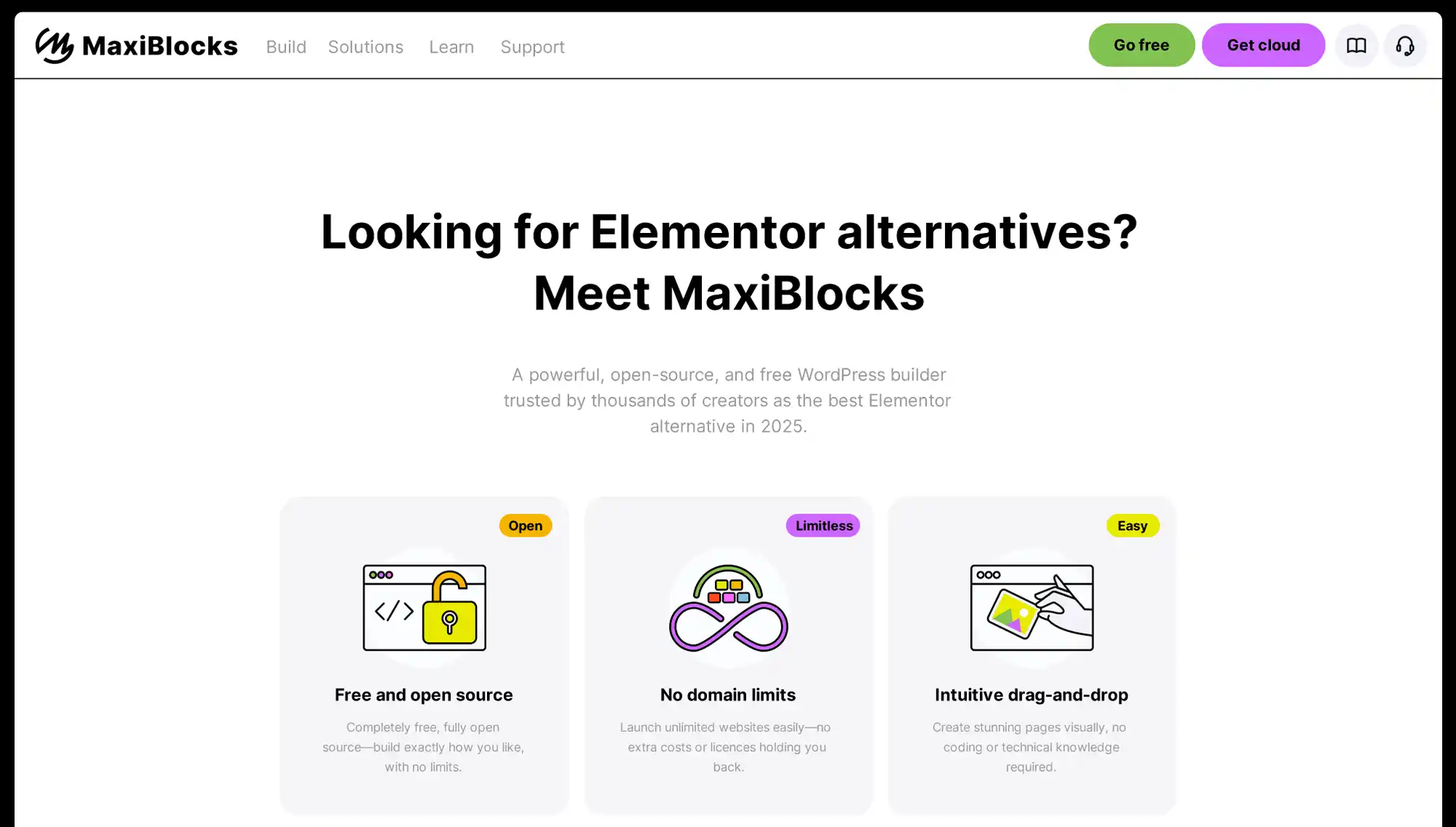
Why MaxiBlocks is a great choice for non-profits looking beyond Elementor
Introduction
MaxiBlocks provides an easy-to-use and budget-friendly alternative, addressing common challenges non-profits face with popular builders like Elementor. With its focus on usability, performance, and accessibility, MaxiBlocks helps non-profits streamline their online presence effectively.
Completely free with full access
MaxiBlocks offers all features without any cost, eliminating the budget constraints that often limit non-profit website potential.
Simple and intuitive
With an interface built directly into WordPress’s Gutenberg editor, non-technical team members and volunteers can quickly and confidently manage website updates.
Donation platform compatibility
MaxiBlocks integrates smoothly with leading donation platforms, ensuring a hassle-free fundraising process directly from your website.
Excellent performance and SEO
The builder generates lightweight, efficient code, improving site loading speeds, user experience, and search engine rankings.
Strong accessibility commitment
MaxiBlocks prioritises accessibility, ensuring non-profit websites comply with essential standards, so all users can easily access information and services.
Extensive free resources and community support
Comprehensive tutorials, documentation, and active community support enable non-profits to manage their websites independently and cost-effectively.
Use cases for non-profits
- Community charities: Quickly set up event registration pages and collect donations seamlessly.
- Educational organisations: Easily manage content updates and ensure course information is accessible to all learners.
- Healthcare initiatives: Ensure vital health resources are accessible while optimising site speed for communities with limited internet access.
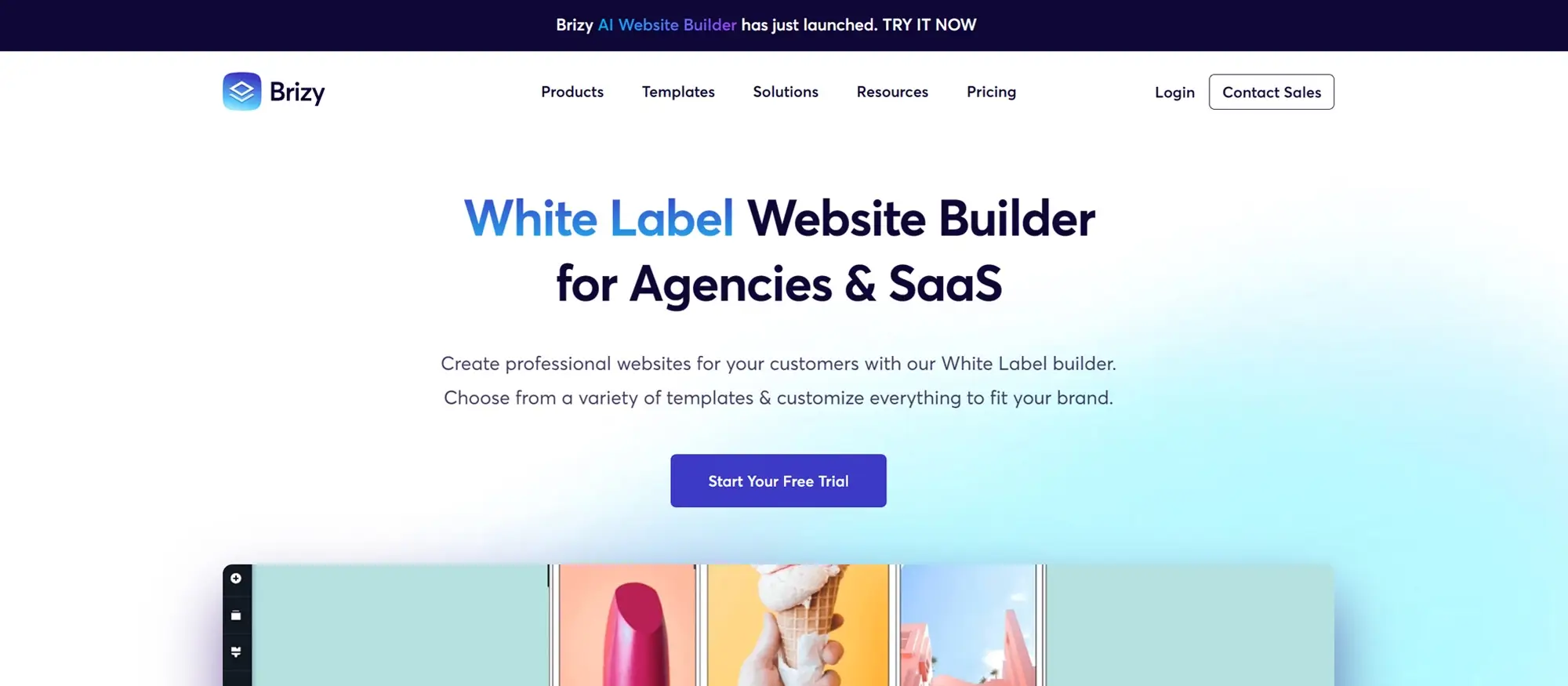
How Gutenberg helps non-profits keep websites simple, fast and free
Introduction
Gutenberg strips things back to basics in a good way. For non-profits that don’t need flashy interfaces or bloated features, the built-in WordPress editor keeps everything lean, focused, and easy to manage without extra plugins or steep learning curves.
No cost, no catch
Gutenberg is part of WordPress, so there’s nothing to buy or install. You can build and run your entire site without touching a single premium tool.
Built for everyday users
It’s designed for people, not developers. Staff and volunteers can jump in and update content without needing to call in help every time something changes.
Works with donation tools you already use
Whether you’re using GiveWP, Donorbox or another plugin, Gutenberg plays nice no extra setup or workaround needed.
Fast-loading pages out of the box
Because it runs on clean, minimal code, Gutenberg keeps your site fast. That means better SEO, better mobile experience, and fewer people dropping off before your page loads.
Accessibility is part of the package
Gutenberg is developed with accessibility in mind, so you’re starting on the right foot when building pages that work for everyone.
Supported by the biggest WordPress community
You’re never stuck. Whether you need help or inspiration, there’s a forum, tutorial or resource for pretty much everything.
Use cases for non-profits
- Food banks: Quickly update hours, services and urgent needs in real time, without chasing down a developer.
- Animal shelters: Post adoption updates and intake info using image and gallery blocks no need for custom layouts.
- Crisis helplines: Maintain a fast, accessible, and reliable site that supports mobile users when it matters most.
Subscribe to our newsletter
Why Bricks Builder works well for non-profits that want control without the clutter
Introduction
Bricks Builder gives non-profits full design flexibility without dragging performance down. It’s a good pick for teams that want more control than Gutenberg but don’t want the bulk or cost of something like Elementor Pro.
One-time cost, no ongoing fees
Bricks has a one-time lifetime pricing model ideal for non-profits with limited budgets that still need professional tools.
Built-in performance focus
Unlike heavier builders, Bricks is made for speed. The frontend output is lightweight, which means your pages load quickly and don’t frustrate visitors.
Visual builder with real-time updates
The live editing experience makes designing pages fast and clear. You see your changes as you make them, which is helpful for teams with limited design experience.
Easy integration with donation platforms
Bricks supports custom forms, shortcodes and embeds, so integrating donation tools is straightforward no extra plugins required.
Accessibility-ready structure
You get clean, semantic HTML out of the box, which helps with both accessibility and SEO something many builders still fall short on.
Helpful, growing user community
While smaller than WordPress or Elementor communities, the Bricks user base is active and supportive, with plenty of shared templates, tutorials and examples.
Use cases for non-profits
- Youth outreach programmes: Build custom layouts to highlight success stories, partnerships and volunteer efforts all while keeping things fast and mobile-friendly.
- Grassroots campaigns: Launch landing pages for fundraising or petitions without waiting on web agencies.
- Local NGOs: Use one Bricks license to manage multiple sites under the same roof, keeping long-term costs low.
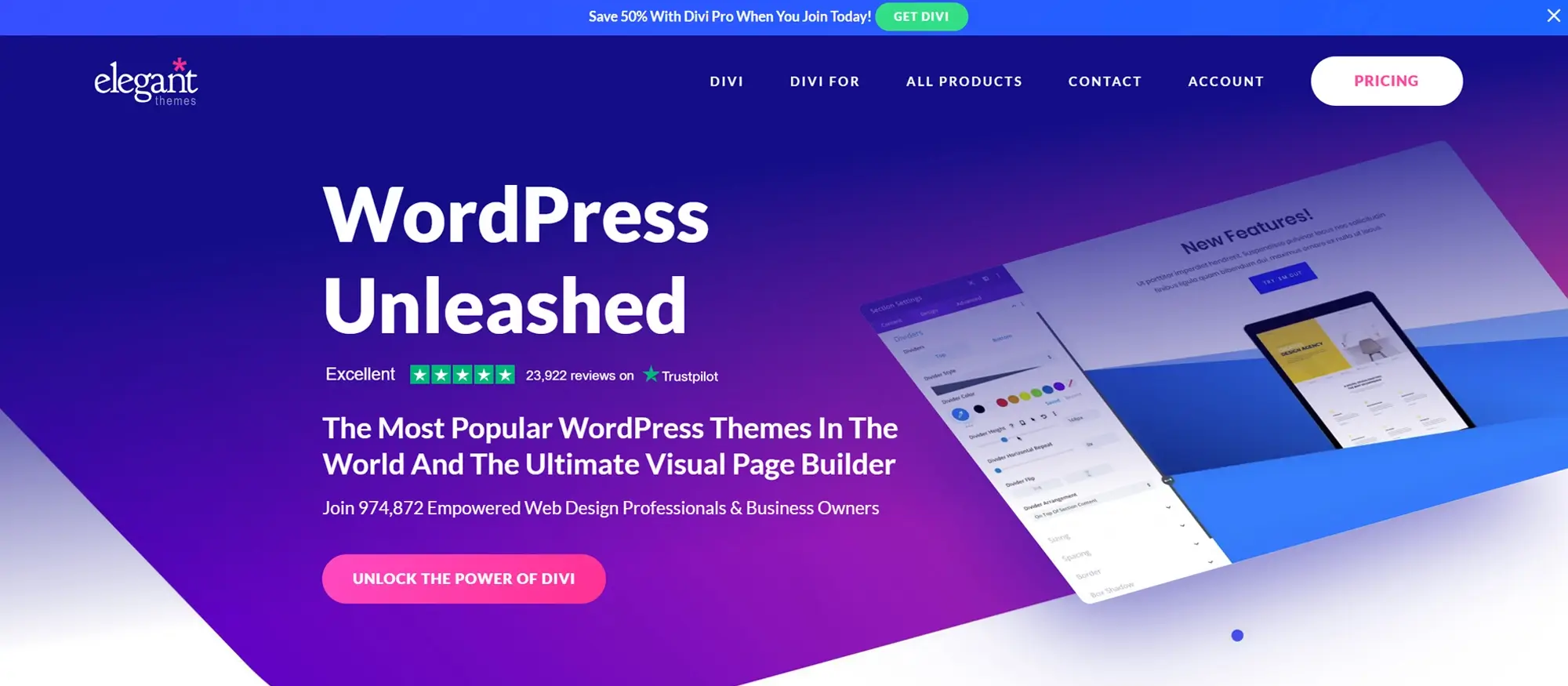
Additional Elementor alternatives for non-profits
Divi
Divi offers a wide range of pre-built layouts, animation features, and customisation options. It’s SEO-aware and often used by non-profits that want full creative control without starting from scratch.
Ideal for: Visually rich pages, tailoring templates to suit branding, building donation pages, and highlighting impact through visual storytelling.
How to use: Install and activate the Divi plugin or theme, select a layout from the Divi Library, then customise using the visual editor.
Kadence
Kadence is built for speed and conversions. With an easy setup and user-friendly interface, it helps non-profits create strong, focused pages that support campaigns and calls to action.
Ideal for: Optimised landing pages, fundraising campaigns, accessible designs, and building from clean, responsive templates.
How to use: Install the Kadence theme or plugin, use the block editor or starter templates to design your page, then publish when ready.
Build like a pro
FAQs about free Elementor alternatives
How do free Elementor alternatives compare to Elementor?
Free Elementor alternatives such as MaxiBlocks, Gutenberg, Brizy, Bricks Builder and Breakdance offer many of the same core features found in Elementor. These include drag-and-drop editing, pre-designed templates and responsive design tools. In contrast, Elementor’s free version limits access to more advanced widgets and features, which are often locked behind a paywall. This makes many of these alternatives more flexible and appealing for users who want full functionality without upgrading to a paid plan.
Can these free Elementor alternatives handle complex projects?
Yes, many free page builders can manage complex websites. MaxiBlocks supports dynamic content and includes a wide range of design patterns and responsive layout options. Brizy and Bricks Builder both offer reusable templates and interactive design tools. These features make them suitable for building professional websites, even when the requirements go beyond basic layouts.
What are the limitations of free Elementor alternatives?
While free Elementor alternatives offer strong features, they may not include everything found in their premium versions. Some may limit advanced styling options, third-party integrations or detailed theme customisation. However, for most small businesses and non-profits, the features available in the free versions are more than enough to build an attractive and functional site.
How does MaxiBlocks stand out as a free Elementor alternative?
MaxiBlocks sets itself apart by offering a wide range of features without any paywall. Users have access to hundreds of design patterns, custom blocks and responsive layout tools. It integrates directly with the WordPress block editor, making it ideal for anyone using Gutenberg. For non-profits or small organisations looking to create a modern website without extra cost, MaxiBlocks is one of the best free Elementor alternatives available today.
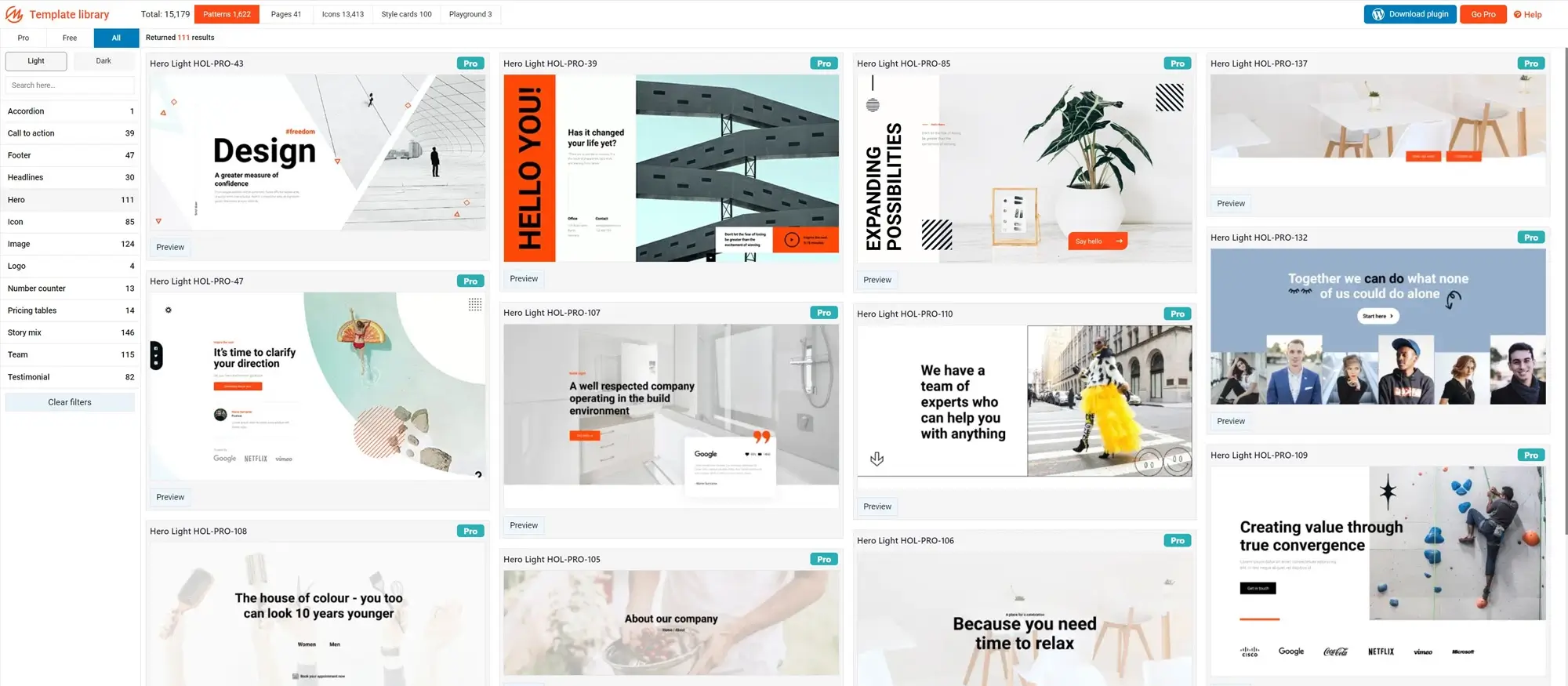
Case study: Building a complete nonprofit website using MaxiBlocks
Introduction
MaxiBlocks makes it simple to build every essential part of a nonprofit website using ready-made patterns, style cards, and flexible blocks. Here’s how you can use its tools to include all the features your organisation needs with no extra plugins or cost.
Clear mission statement (above the fold)
Use a Hero block pattern with a strong headline, subtext, and image. You can customise colours, fonts, and layout using style cards to match your branding.
Impact-focused content
Drop in testimonial and statistic block patterns from the library. Add video blocks, photo galleries, or mix content with layout containers for visual storytelling.
Donation page
Use button blocks with strong CTAs like “Give Now,” linking to a third-party donation tool. Add pricing table-style blocks to show donation levels. The clean layout ensures everything works well on mobile.
Call-to-action (CTA) everywhere
Insert button blocks in footers, headers, and mid-page using reusable components. Style them consistently across the site with style cards for brand consistency.
Volunteer/join us page
Use a team or feature block to explain volunteer roles, then a form block or external link to sign-up tools. Use icon blocks to highlight steps clearly.
About page
Choose an About pattern from the MaxiBlocks template library, then add team blocks, timelines (using flexible row and column layouts), and text content styled to match your identity.
Events or news section
Use blog-style layout patterns or the Context Loop block to automatically list posts about events, updates, and news. Add an email signup to stay connected.
Contact information
Drop in a contact pattern that includes a form, email, social links, and an embedded map if needed. This layout is already optimised for phones and tablets.
Email newsletter signup
Use a footer or section pattern with a simple form and text about what subscribers will get. You can even add a downloadable PDF with a button block if offering a lead magnet.
Social proof
Show logos using image group blocks and add short testimonials in testimonial layouts. For added credibility, include media quotes using stylised text blocks.
Accessibility and mobile optimisation
MaxiBlocks outputs clean, responsive HTML and CSS with six breakpoints, ensuring your content adjusts to all screen sizes. You can set large fonts, adjust contrast, and add alt text easily.
SEO and analytics
The builder keeps code lightweight, which helps with search rankings. You can add meta info and integrate tracking scripts directly into pages or templates no bloated extras needed.
Outcome
With no locked features and full access to thousands of patterns, blocks, and icons, your team can build and manage a professional nonprofit site using MaxiBlocks quickly, affordably, and with full control.
Final thoughts Elementor alternatives for non-profits
Non-profits have enough to manage without wrestling with complicated, expensive website tools. Elementor is popular, but it’s not always the right fit especially when budget, simplicity, and speed matter.
Whether you’re building from scratch or looking to switch, there are strong alternatives that offer real advantages. MaxiBlocks stands out for giving you full control, design flexibility, and a powerful library all completely free. Gutenberg keeps things lean and accessible, making it perfect for teams who want to keep updates simple. Bricks Builder is a solid option for those wanting more design freedom without the usual performance hit. And if your focus is on polished visuals and extensive templates, Divi and Kadence both offer strong, reliable setups.
The key is knowing what your organisation actually needs and choosing the tool that helps you deliver it without wasted time, money, or stress. Whatever you pick, focus on speed, clarity, accessibility, and ease of use. That’s what keeps people engaged, donors returning, and your mission front and centre.
Discover the best Elementor alternatives for WordPress
Explore a complete collection of Elementor alternatives with tips, comparisons, and tutorials for every type of WordPress site.
FAQs about Elementor alternatives for non-nrofits
What are some good Elementor alternatives for non-profits?
MaxiBlocks is a strong alternative to Elementor for non-profits. It combines ease of use with a wide range of design tools and pre-built templates, allowing organisations to build professional websites without technical barriers.
Why should non-profits consider MaxiBlocks?
MaxiBlocks is easy to learn and requires no coding. It offers advanced customisation, flexible design tools, and reliable performance. These features help non-profits present their message clearly and effectively online without needing extra resources.
How does MaxiBlocks compare to other page builders?
Unlike some free builders with limited functionality, MaxiBlocks provides a large pattern library, responsive layout controls and integration with popular WordPress tools. It includes everything most non-profits need to launch a site that looks polished and works well on any device.
Can MaxiBlocks handle larger or more complex non-profit websites?
Yes. MaxiBlocks supports scalable projects with dynamic content and flexible templates. Whether you are managing campaigns, showcasing programmes or hosting volunteer applications, it can support complex layouts and content types.
Is MaxiBlocks affordable for non-profits?
The core version of MaxiBlocks is free, which is ideal for small teams or organisations on tight budgets. A Pro version is available with extra features and lifetime pricing, offering excellent long-term value for growing non-profits.
What kind of support does MaxiBlocks offer?
MaxiBlocks offers helpful documentation, video tutorials and customer support. For non-profits needing guidance, the support team is responsive and able to help troubleshoot issues or offer best practices for getting started.
Does MaxiBlocks offer templates suited to non-profit websites?
Yes. MaxiBlocks includes a wide selection of templates and block patterns suitable for non-profits. These templates cover common needs such as donation pages, event listings and volunteer sign-up forms, all of which are customisable to match your brand.
Can MaxiBlocks integrate with the tools non-profits already use?
MaxiBlocks is designed to work well with popular WordPress plugins, including those for email marketing, CRM, donations and event management. This makes it a flexible choice for non-profits looking to build a website that connects to the rest of their digital tools.
What is the best Kadence alternative in 2025?
If you’re looking for a reliable Kadence alternative in 2025, MaxiBlocks is a strong option. It combines a fast block-based theme with a visual builder and a large pattern library, making it a good fit for designers and non-coders alike.
Which Elementor alternative is best for membership sites?
For building membership sites, MaxiBlocks works well as an Elementor alternative. It integrates with WordPress membership plugins and lets you create protected pages and custom layouts without needing to write code.
What’s a good Elementor alternative for landing pages?
MaxiBlocks is a practical Elementor alternative for landing pages. It includes clean, responsive templates and conversion-focused patterns that help you build fast-loading pages designed to get results.
What’s the best Elementor alternative for portfolio sites?
If you’re building a portfolio, MaxiBlocks is a good Elementor alternative. It offers design flexibility, image-friendly layouts and full control over style and spacing, making it ideal for creative work.
Which Elementor alternative should photographers consider?
Photographers need strong image display tools and responsive layouts. MaxiBlocks is a solid Elementor alternative for photographers, offering image grids, lightboxes and easy layout adjustments for showcasing work.
What Elementor alternative suits non-profit websites?
For non-profits, MaxiBlocks is a helpful Elementor alternative. It is free to use, offers accessible design features and includes templates for donation pages, mission statements and events.
What Elementor alternative works well for designers?
Designers will find MaxiBlocks a useful Elementor alternative. It supports reusable style tools, visual design controls and a library of layout blocks that work within the native WordPress editor.
What Elementor alternative is best for developers?
MaxiBlocks is a developer-friendly Elementor alternative. It is open source, outputs clean HTML and CSS, and does not rely on shortcodes or heavy scripts, making it easy to extend and customise.
What’s the best Elementor alternative for agencies?
Agencies benefit from using MaxiBlocks as an Elementor alternative. It supports design systems, shared libraries, client-friendly editing and faster project delivery without compromising quality.
What Elementor alternative is ideal for small businesses?
MaxiBlocks is a good Elementor alternative for small businesses. It is easy to learn, comes with business-focused templates and helps you launch a professional-looking site quickly.
What Elementor alternative is good for bloggers?
For bloggers, MaxiBlocks is a practical Elementor alternative. It supports WordPress posts, includes pre-styled content blocks and keeps pages fast and readable for visitors.
What’s a custom-code friendly Elementor alternative?
MaxiBlocks is a suitable custom code Elementor alternative. It allows full control over layout and structure without adding bloat, which makes it easy to build tailored solutions.
What is a good no-code Elementor alternative?
MaxiBlocks is a straightforward no-code Elementor alternative. You can build full websites using drag-and-drop blocks, with no need to write or edit code.
Which Elementor alternative supports template-based building?
If you want to work with templates, MaxiBlocks is a useful template-based Elementor alternative. It includes full-page templates, reusable patterns and starter sites that speed up the design process.
What Elementor alternatives are best for responsive design?
MaxiBlocks is a strong responsive design Elementor alternative. It supports six breakpoints and gives you control over layouts on mobile, tablet and desktop without needing extra tools.
What’s the best SEO-friendly Elementor alternative?
MaxiBlocks is a dependable SEO-friendly Elementor alternative. It works with top SEO plugins, produces clean code and supports good content structure for better search engine visibility.
What Elementor alternative is best for eCommerce?
For eCommerce, MaxiBlocks is a solid Elementor alternative. It integrates with WooCommerce and includes product listings, checkout layouts and marketing blocks that support online sales.
What is the best lightweight Elementor alternative?
MaxiBlocks is a good choice as a lightweight Elementor alternative. It avoids heavy scripts and features, keeping your site fast, efficient and mobile friendly.
What Elementor alternative includes drag-and-drop features?
MaxiBlocks is a drag-and-drop Elementor alternative that works entirely inside the WordPress block editor. It lets you build layouts visually without needing any code.
Is there an open source Elementor alternative?
Yes, MaxiBlocks is a reliable open source Elementor alternative. Both the builder and theme are free to use, with no restrictions on how you customise or deploy them.
Want to read more?
Take a look at what’s better than Elementor for WordPress, or find out if Elementor is still free in 2025. Curious how it compares to Gutenberg? Read which is better: Gutenberg or Elementor and whether Elementor is better than Gutenberg in 2025. You can also explore alternatives better than Elementor or browse the full list of Elementor alternatives.
WordPress itself
Official Website
wordpress.org – This is the official website for WordPress, where you can download the software, find documentation, and learn more about using it.
WordPress Codex
codex.wordpress.org/Main_Page – This is a comprehensive documentation resource for WordPress, covering everything from installation and configuration to specific functionality and troubleshooting.
WordPress Theme Directory
wordpress.org/themes – The official WordPress theme directory is a great place to find free and premium WordPress themes. You can browse themes by category, feature, and popularity.
maxiblocks.com/go/help-desk
maxiblocks.com/pro-library
www.youtube.com/@maxiblocks
twitter.com/maxiblocks
linkedin.com/company/maxi-blocks
github.com/orgs/maxi-blocks
wordpress.org/plugins/maxi-blocks

Kyra Pieterse
Author
Kyra is the co-founder and creative lead of MaxiBlocks, an open-source page builder for WordPress Gutenberg.
You may also like

